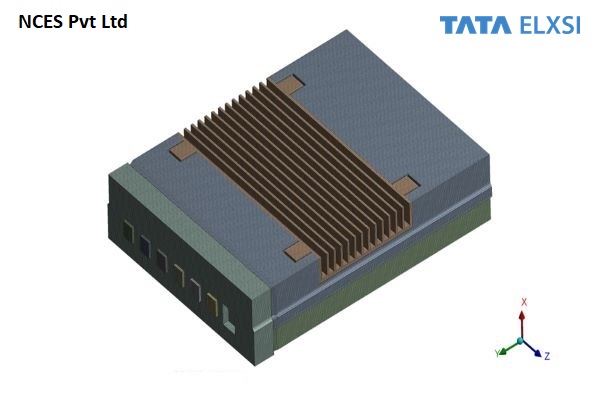INTRODUCTION
Telecom towers are essential components of today's communication infrastructure, serving as a foundation for antennas and equipment that facilitate wireless communication. These tall structures are constantly exposed to diverse environmental factors, with wind being a significant force that can potentially affect their structural integrity and overall functionality. Wind-induced vibrations are a crucial factor to be mindful of when designing structures, as they can have various consequences. Tower components, including beams and joints, must be designed to withstand wind loads in order to prevent excessive stress and fatigue. Additionally, these vibrations can cause discomfort for users and the surrounding community, and even result in significant damage to the tower's sensitive telecommunication equipment. Therefore, it is essential to consider and address these effects during the design process. By meticulously considering the principles of aerodynamics in the design of telecom towers, engineers can effectively reduce wind-induced vibrations. This not only enhances the overall experience for everyone but also guarantees the tower's long-term structural integrity and stability.
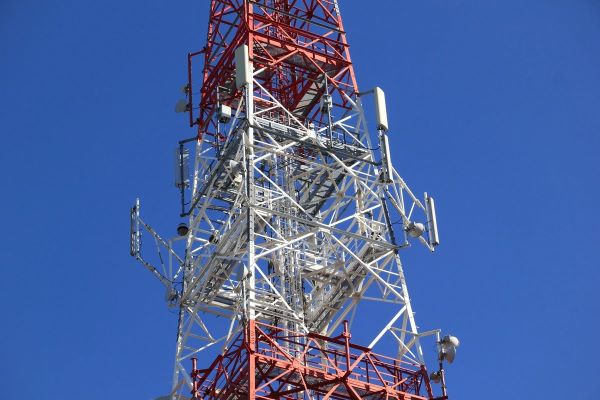
AERODYNAMICALLY OPTIMIZED TOWER DESIGN
An aerodynamically optimized tower design is capable of withstanding strong winds without experiencing excessive deflection or damage. The tower's geometry plays a crucial role in determining its aerodynamic performance. By incorporating a streamlined cross-section and a smooth surface finish, the tower effectively minimizes turbulence caused by wind, prevents air from swirling around it, reduces drag, and optimizes its overall aerodynamic efficiency.
COMPUTATIONAL FLUID DYNAMICS ANALYSIS TO ASSESS WIND LOAD IMPACT
Computational Fluid Dynamics simulations are becoming increasingly sophisticated, allowing engineers to simulate and analyze complex fluid flow patterns around telecom towers. This advancement enables more accurate predictions of wind loads, aerodynamic performance, and structural behavior. As CFD simulations continue to improve, they will undoubtedly play a more significant role in the design and optimization of telecom towers.
PROJECT OVERVIEW
We are proud to serve our esteemed client, a renowned global leader in the hi-tech manufacturing industry. With our expertise in the field, we have been entrusted with the important task of conducting Computational Fluid Dynamics (CFD) analysis to analyze airflow patterns around the cross-sections of telecom towers. This project holds great significance, and we are dedicated to delivering outstanding results.
DESCRIPTION OF CAD MODEL CONSIDERED FOR CFD ANALYSIS
CFD analysis is conducted on the CAD model, consisting of a section of the telecom tower. The cross section is hexagonal.
CFD MESH
The Poly-Hex core elements are used to mesh the simplified CAD model. The mesh size is 12 million, and it is refined in the boundary layer region to meet the y plus requirement.
FLOW MODELLING
The flow is modeled as 3D, steady state, incompressible, viscous, and turbulent. The turbulence closure is represented by the K-Omega SST Turbulence model (with a y plus value of 0.9).
BOUNDARY CONDITIONS
CFD analysis is conducted for wind velocities ranging from 150 to 175 kilometers per hour.
The CFD analysis outcomes have allowed us to observe and examine the flow pattern, pressure distribution, turbulence, vortex zones and the drag coefficient. Through simulating various wind directions and analyzing the findings, we have obtained the conservative value of drag coefficient.
We Got More
Go through All Our Case Studies
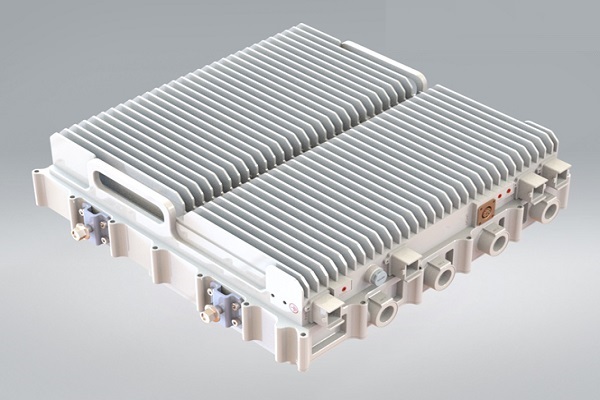
CFD analysis of Multi Band Remote Radio Unit
The advent of 5G technology has brought about unprecedented advancements in wireless communications, enabling faster speeds, lower latency, and increased capacity. These advancements are associated with higher power consumption and increased heat generation in the 5G Remote Radio units.Increasing data rates and network densification require radio units to process larger volumes of data, leading to higher power consumption and heat generation. Environmental factors such as ambient temperature, humidity, and exposure to direct sunlight also impact the thermal aspects of the radio units. Read More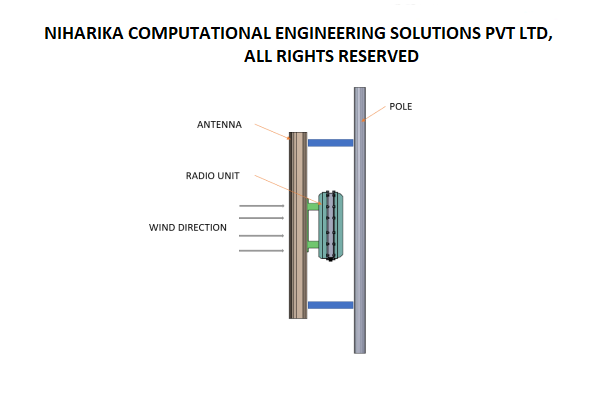
Wind Load analysis for multiband 5G Remote Radio Unit with Antenna using CFD
The seamless operation of base station antennas is of utmost importance for efficient and reliable communication networks. However, these antennas are constantly exposed to various environmental factors that can affect their performance and structural stability. Among these factors, wind load plays a significant role. Read MoreDEVELOPMENT OF COOLING SOLUTION FOR GaN RF POWER AMPLIFIER
The demand for high-power and efficient radio frequency (RF) power amplifiers has been steadily increasing across various industries, including wireless communications, radar systems, and satellite communication. GaN (Gallium Nitride) technology has emerged as a game-changer in RF power amplification due to its exceptional performance characteristics and advantages over traditional technologies. GaN technology offers higher power density, improved efficiency, and wide bandwidth capability, setting it apart from traditional technologies like GaAs (Gallium Arsenide) or SiC (Silicon Carbide). Read More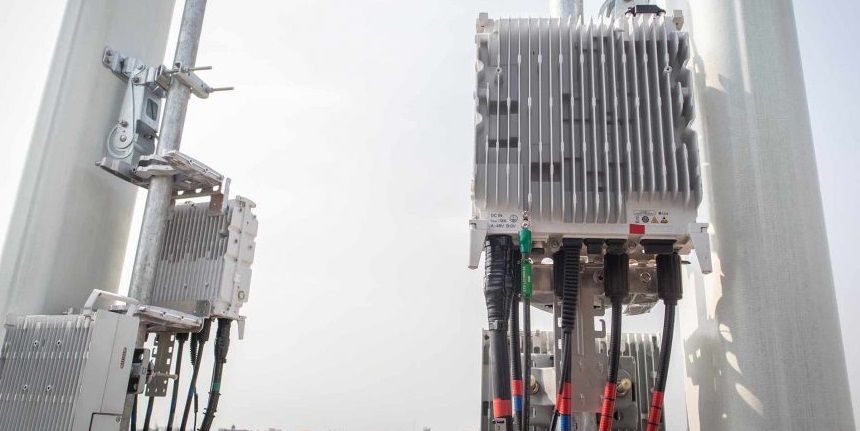
Structural analysis for Triband Radio unit with antenna
In this project, we performed FEM analysis to check strength of the triband antenna model for the given load conditions. FE mesh consists of higher-order Tet elements & Hexahedral elements. Mesh size is 2810173 nodes & 1611495 elements. Appropriate contacts are modeled between all the parts in the assembly. FEM analysis is carried out as per the load conditions provided by the customer. We carried out Modal Analysis, Sine sweep Analysis (Harmonic Analysis), Random Vibration Analysis, Shock Analysis, Seismic Analysis, and Wind load Analysis. Read More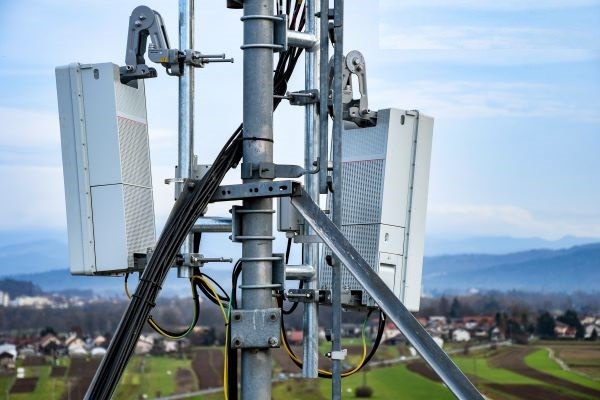
Structural analysis for 5G Remote Radio Unit
The advent of 5G technology has revolutionized the telecommunications industry, ushering in a new era of ultra-fast data speeds, low latency, and advanced network capabilities. Amidst this transformative landscape, the 5G Remote Radio Unit (RRU) emerges as a critical component, playing an instrumental role in the deployment and optimization of 5G networks. With 5G networks, RRUs have evolved to handle higher data volumes and faster speeds. They are designed to support an increasing number of devices and provide seamless connectivity even in densely populated areas. These modern marvels are a testament to the incredible progress made in wireless technology. Read More